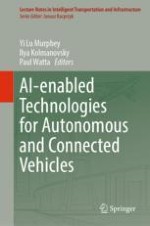2023 | OriginalPaper | Chapter
Socioeconomic Impact of Emerging Mobility Markets and Implementation Strategies
Authors : Ioannis Vasileios Chremos, Andreas A. Malikopoulos
Published in: AI-enabled Technologies for Autonomous and Connected Vehicles
Publisher: Springer International Publishing
Activate our intelligent search to find suitable subject content or patents.
Select sections of text to find matching patents with Artificial Intelligence. powered by
Select sections of text to find additional relevant content using AI-assisted search. powered by
